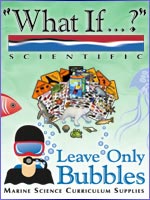

 |
 |
|
|||
|
|
Home Order Direct Density Flow Models Geology Simulations Water Masses Thermocline Upwelling/Downwelling Halocline/Internal Seiche Junior Model Additional Information  What If Scientific has merged with Leave Only Bubbles! Click here to visit the new store for all of your marine and Earth science curriculum needs!
|
Introduction By the 1960's, abundant evidence supporting the hypothesis of continental drift and seafloor spreading led to the formation of a more all-encompassing theory. This theory, called the plate tectonic theory, not only describes continental movement, but also proposes a possible explanation of how and why continents move. Driving Question: What is the force that "drives" the plates? Self Assessment: The following statements relate to the Driving Question. Indicate if you think the following statements are true (T) or false (F). Also, specify how confident you feel about your answer by writing H (high confidence), M (moderate confidence), or L (low confidence).
The following simulation is designed to illustrate the most widely accepted mechanism behind the driving forces necessary to move the Earth's lithospheric plates. After successfully completing this activity the student will be able to: . Explain and describe the movement of a fluid within a convection current. . Define DENSITY and explain how differences in temperatures affect differences in density. . Explain how the Earth's asthenosphere plays an important role in plate tectonics. . Describe collision (convergent) plate boundaries and give an example. . Describe spreading (divergent) plate boundaries and give an example. . Describe sliding plate boundaries and give an example. Discussion questions 1. What is meant by the DENSITY of a substance? 2. What is CONVECTION? 3. Fill in the blanks with terms that complete the statement. At great depth within the Earth solid rock is exposed to extreme ______________ and _______________. Within the asthenosphere these extreme conditions may cause solid rock to partially melt and flow. 4. Where is the Earth's asthenosphere, and how does it play an important role in plate tectonics? 5. What is meant by a DIVERGENT PLATE BOUNDARY? Give an example of one if you can. 6. What is meant by a CONVERGENT PLATE BOUNDARY? Give an example of one if you can. 7. What is meant by a SLIDING PLATE BOUNDARY? Give an example of one if you can. PART 1 - CONVECTION CURRENT DEMONSTRATION Make a labeled diagram of the Density Flow Model set-up on the illustration provided below: Red 250 ml bottle (HOT), 1000 ml bottles (ICY COLD) Hypothesis #1 Predict what visible changes will take place when an open 250 ml bottle of hot water (red) is submerged in the center of the tank and bottles of ice water are placed in the tank approximately 30 cm on each side of the 250 ml bottle. Describe the changes you believe will occur. With a red-colored pencil, draw illustrations below to represent your mental picture of how the fluids will appear first at 1 minute, then 3 minutes after the 250 ml bottle is submerged. Label the fluids: HOT (red), COLD (clear). 1 minute 3 minutes O.K. - You may now conduct the experiment (#1). Observation #1 Describe what happened. Was your hypothesis correct? 1. Explain why the fluids changed position. 2. Was convection taking place inside the 250 ml bottle? Explain. Extension questions 1. In comparison to the Earth's structure, what type of plate boundary is represented by the warm, rising red fluid from the 250 ml bottle? Where on planet Earth would you find such a situation? 2. What type of plate boundary would be represented where the waters are cooled by the ice and begin to sink? Where on planet Earth does this occur? PART 2 - SEAFLOOR SPREADING SIMULATION Hypothesis #2 Predict what will happen to the distance between the models of Africa and South America if they are placed in the tank above a new bottle of hot water. Why? Refill the 250 ml bottle with hot (red) water and carefully place it in the center of the tank. Gently place the wooden blocks which represent South America and Africa in the tank so that the two are approximately 5 cm apart and on opposite sides of the hot water bottle. Place South America to the left of center and Africa to the right of center. OK - You may now conduct the experiment (#2). Wait 60 seconds, then measure and record the new distance. _______cm Observation #2 Describe what happened. Was your hypothesis correct? Why or why not? Extension questions 1. How would the spreading rate of the wooden blocks compare to the actual rate at which South America and Africa are actually spreading? 2. If new material is always emerging from divergent boundaries, and both the Atlantic and Pacific sea floors contain spreading centers, why is only the Atlantic Ocean becoming larger? 3. The famous San Andreas Fault in California is probably the best example of a SLIDING PLATE BOUNDARY. Can you think of a way convection currents could be used to show this type of a boundary? |
|
©2000-2009 What If Scientific - Leave Only Bubbles. All Rights Reserved. |
|